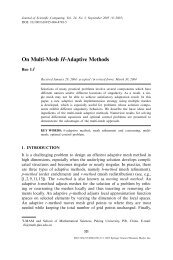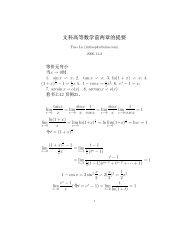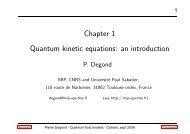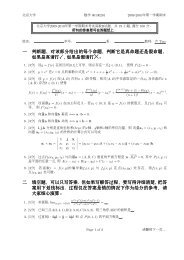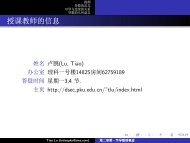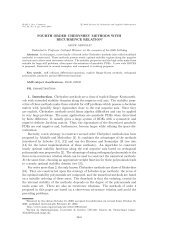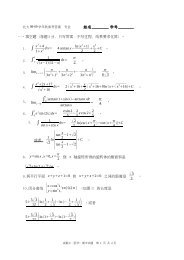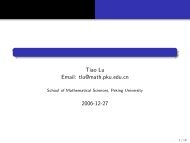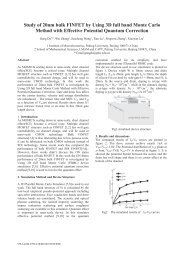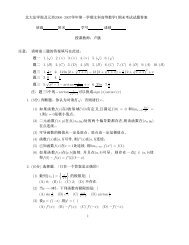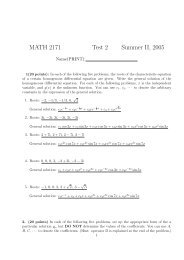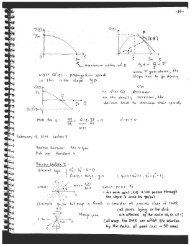Abstract
Abstract
Abstract
Create successful ePaper yourself
Turn your PDF publications into a flip-book with our unique Google optimized e-Paper software.
CHAPTER 3. BIFURCATION ANALYSIS 57<br />
bordering method. This is because the bordering method’s coefficient matrix is the<br />
Jacobian matrix W ′ ( f) which will be going singular at turning points.<br />
3.7 Parallelization of Simulator<br />
Since LOCA has been developed to run with both serial and parallel applications<br />
and adding grid points to enhance the accuracy of the simulation would substan-<br />
tially increase computational time, we were motivated to parallelize the simulator.<br />
Therefore, we had to determine how we would split apart the f vector and the W ( f)<br />
evaluation across the different processors. We decided to divide the f vector across<br />
the processors by the spatial variable x. This meant each processor had a contiguous<br />
block of x-space, with each processor owning all of the possible k values for each x<br />
grid point it had. This makes computing integrals in k-space a completely parallel<br />
process, with no communication between processors required, but the integral and<br />
derivative term in x-space will require communication between the processors. One<br />
could have done the opposite, where each processor gets a continugous block of k-<br />
space, with each processor owning all of the possible x values for each k grid point it<br />
had. In this case, computing the derivative and integral in x-space would be trivial<br />
while requiring communication between processors to compute the k-space integrals.<br />
We chose the way we distributed the data between the processors because there are<br />
more k-space integrals to compute, and they are the most computationally intensive<br />
part of the simulation.




